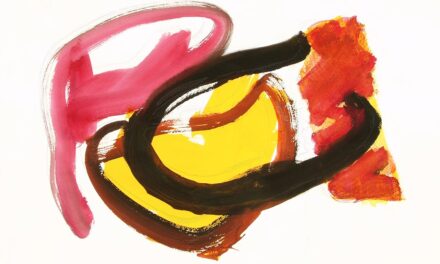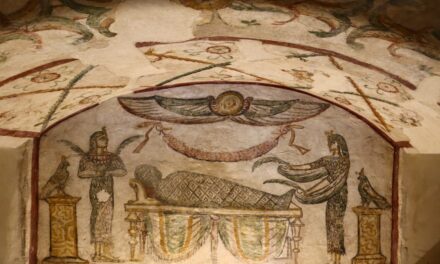Transavantgarde art emerged in the late 1970s and early 1980s as a response to the prevailing conceptual and minimalist art movements of the time. The term ‘transavantgarde’ combines the Italian ‘trans’ (beyond) and ‘avant-garde’, signifying a movement that aimed to transcend avant-garde principles and explore new forms of artistic expression. This movement is characterised by its rejection of strict formalism and intellectualism associated with conceptual art, instead embracing traditional artistic techniques and styles, including figurative painting and sculpture.
Transavantgarde art places emphasis on emotional and expressive content whilst distancing itself from the notion that art should be politically or socially engaged. Italian art critic Achille Bonito Oliva is credited with coining the term ‘transavantgarde’ in 1979 to describe a group of Italian artists whose work he perceived as departing from contemporary art trends. The movement quickly gained international recognition, with artists worldwide adopting the transavantgarde philosophy.
Often described as a ‘neo-expressionist’ movement, transavantgarde art shares similarities with the German expressionist movement of the early 20th century, particularly in its focus on emotional and psychological content. However, it distinguishes itself by rejecting the avant-garde’s emphasis on innovation and progress, instead embracing traditional artistic forms and techniques.
Summary
- Transavantgarde art is a movement that emerged in the 1980s as a reaction against conceptual and minimalist art.
- The movement was founded by Italian artist Achille Bonito Oliva and aimed to revive traditional artistic values and techniques.
- Key characteristics of Transavantgarde art include a return to figurative and expressive forms, a rejection of conceptualism, and a focus on individual creativity.
- Influential Transavantgarde artists include Enzo Cucchi, Sandro Chia, and Francesco Clemente, who gained international recognition for their bold and expressive works.
- Transavantgarde art continues to have an impact on the contemporary art world, with its influence seen in the work of artists who embrace a return to traditional forms and techniques.
The Origins of Transavantgarde Art
The Rejection of Conceptual Art
In this context, many artists began to turn away from the radical experimentation of conceptual art and towards a more traditional and emotionally expressive form of artistic expression.
Influence of International Trends
This shift was also influenced by a broader international trend towards a re-evaluation of modernist and avant-garde art, as artists began to look back to earlier artistic movements for inspiration.
Key Figures and Characteristics
One of the key figures in the development of transavantgarde art was the Italian artist Sandro Chia, whose work came to epitomize the movement’s rejection of conceptual art and embrace of traditional artistic forms. Chia’s paintings are characterised by their bold use of colour and their expressive, figurative style, which harks back to the work of earlier artists such as Picasso and Matisse. Chia’s work quickly gained international attention, and he became one of the leading figures of the transavantgarde movement. Other influential artists associated with transavantgarde art include Francesco Clemente, Enzo Cucchi, and Mimmo Paladino, all of whom were part of a group exhibition curated by Achille Bonito Oliva in 1980 that is often seen as a key moment in the development of the movement.
Key Characteristics of Transavantgarde Art

Transavantgarde art is characterized by several key features that set it apart from other contemporary art movements. One of the most distinctive aspects of transavantgarde art is its rejection of the formalism and intellectualism of conceptual art, in favour of a more emotionally expressive and figurative style. Transavantgarde artists often use bold colours and dynamic brushwork to create works that are highly charged with emotion and psychological intensity.
The movement is also known for its embrace of traditional artistic techniques, such as painting and sculpture, which had been largely abandoned by many contemporary artists in favour of more experimental forms of artistic expression. Another key characteristic of transavantgarde art is its rejection of the idea that art should be politically or socially engaged. While many contemporary artists at the time were using their work to address pressing social and political issues, transavantgarde artists were more interested in exploring personal and psychological themes.
This emphasis on individual expression and emotional content is one of the defining features of transavantgarde art, and it sets it apart from other contemporary art movements. Finally, transavantgarde art is also characterized by its rejection of the avant-garde’s emphasis on innovation and progress, in favour of a more traditional and timeless form of artistic expression.
Influential Transavantgarde Artists
Several artists have been instrumental in shaping the transavantgarde movement and gaining international recognition for their work. One of the most prominent figures associated with transavantgarde art is Sandro Chia, whose bold and expressive paintings have come to epitomize the movement’s rejection of conceptual art and embrace of traditional artistic forms. Chia’s work is characterized by its dynamic brushwork and use of vibrant colours, as well as its emotionally charged content.
Another influential artist associated with transavantgarde art is Francesco Clemente, whose enigmatic and dreamlike paintings have gained him widespread acclaim. Clemente’s work often explores themes of identity and spirituality, and it is known for its rich symbolism and evocative imagery. Enzo Cucchi is another key figure in the transavantgarde movement, known for his distinctive figurative style and use of bold colours.
Cucchi’s work often draws on mythological and archetypal themes, and it is characterized by its expressive and emotive content. Mimmo Paladino is also an important artist associated with transavantgarde art, known for his enigmatic and mysterious paintings that explore themes of memory and identity. Paladino’s work often features symbolic imagery and evocative forms, and it has gained him international recognition as a leading figure in the transavantgarde movement.
These artists have played a crucial role in shaping the transavantgarde movement and gaining recognition for its distinctive style and ethos.
Transavantgarde Art in the Contemporary Art World
Transavantgarde art continues to have a significant impact on the contemporary art world, both in terms of its influence on younger generations of artists and its ongoing relevance within the broader context of contemporary art. While the movement emerged as a reaction against the dominant trends in contemporary art at the time, it has since come to be seen as an important chapter in the history of 20th-century art, and its influence can be seen in the work of many contemporary artists. The bold use of colour, expressive brushwork, and emotionally charged content that are characteristic of transavantgarde art continue to resonate with artists working today, who are drawn to its rejection of formalism and intellectualism in favour of a more personal and expressive form of artistic expression.
Transavantgarde art has also had a lasting impact on the broader context of contemporary art, as it has helped to challenge the idea that art should always be politically or socially engaged, and has opened up space for a more individualistic and emotionally expressive form of artistic expression. The movement’s rejection of the avant-garde’s emphasis on innovation and progress in favour of a more traditional and timeless form of artistic expression continues to resonate with artists who are looking to explore new ways of engaging with artistic tradition. In this way, transavantgarde art remains an important touchstone for contemporary artists who are seeking to push beyond the boundaries of conventional artistic practice.
Criticisms and Controversies Surrounding Transavantgarde Art

The Retreat from Radical Experimentation
One common criticism levelled against transavantgarde art is that it represents a retreat from the radical experimentation and innovation that had come to define avant-garde art in the 20th century. Critics argue that by embracing traditional artistic forms and techniques, transavantgarde artists are turning their backs on the spirit of progress that had driven so much artistic innovation in previous decades.
Nostalgia for an Earlier Era
Another criticism levelled against transavantgarde art is that it represents a form of nostalgia for an earlier era in art history, rather than a genuinely new form of artistic expression. Critics argue that by drawing on earlier artistic movements such as expressionism, transavantgarde artists are failing to engage with the pressing social and political issues of their time, and are instead retreating into a romanticised vision of the past.
The Role of Tradition and Innovation
These criticisms reflect a broader debate within contemporary art about the relationship between tradition and innovation, and about the role of history in shaping artistic practice.
The Legacy of Transavantgarde Art
The legacy of transavantgarde art can be seen in its lasting impact on the broader context of contemporary art, as well as its ongoing influence on younger generations of artists. The movement’s rejection of formalism and intellectualism in favour of a more emotionally expressive form of artistic expression continues to resonate with artists working today, who are drawn to its bold use of colour, expressive brushwork, and psychologically charged content. Transavantgarde art has also helped to challenge the idea that art should always be politically or socially engaged, opening up space for a more individualistic form of artistic expression.
The legacy of transavantgarde art can also be seen in its ongoing relevance within the broader context of contemporary art history. While the movement emerged as a reaction against the dominant trends in contemporary art at the time, it has since come to be seen as an important chapter in the history of 20th-century art, and its influence can be seen in the work of many contemporary artists. In this way, transavantgarde art remains an important touchstone for contemporary artists who are seeking to push beyond the boundaries of conventional artistic practice, challenging ideas about tradition, innovation, and individual expression.
If you are interested in learning more about different art movements, you may also want to check out this article on Expressionism. This movement, which emerged in the early 20th century, focused on expressing emotions and feelings through art, often using bold colours and distorted forms. Understanding Expressionism can provide valuable context for appreciating the Transavantgarde movement and its departure from traditional artistic conventions.
FAQs
What is Transavantgarde Art?
Transavantgarde art is an art movement that emerged in the late 1970s and early 1980s as a reaction against the conceptual and minimalist art movements. It is characterized by a return to figurative and expressive forms, often drawing on traditional and folk art styles.
Who were the key figures of the Transavantgarde movement?
The key figures of the Transavantgarde movement include Italian artists such as Sandro Chia, Enzo Cucchi, and Francesco Clemente. These artists sought to revive the emotional and expressive qualities of art, drawing on a wide range of influences including folk art, mythology, and religious symbolism.
What are the main characteristics of Transavantgarde art?
Transavantgarde art is characterized by a return to figurative and expressive forms, a rejection of the conceptual and minimalist art movements, and a focus on emotional and symbolic content. The movement also embraces a wide range of influences, including traditional and folk art, mythology, and religious symbolism.
How did the Transavantgarde movement impact the art world?
The Transavantgarde movement had a significant impact on the art world, particularly in the 1980s. It represented a shift away from the conceptual and minimalist art movements, and its emphasis on emotional and expressive content helped to reinvigorate figurative art. The movement also had a lasting influence on contemporary art, inspiring a renewed interest in traditional and folk art styles.




